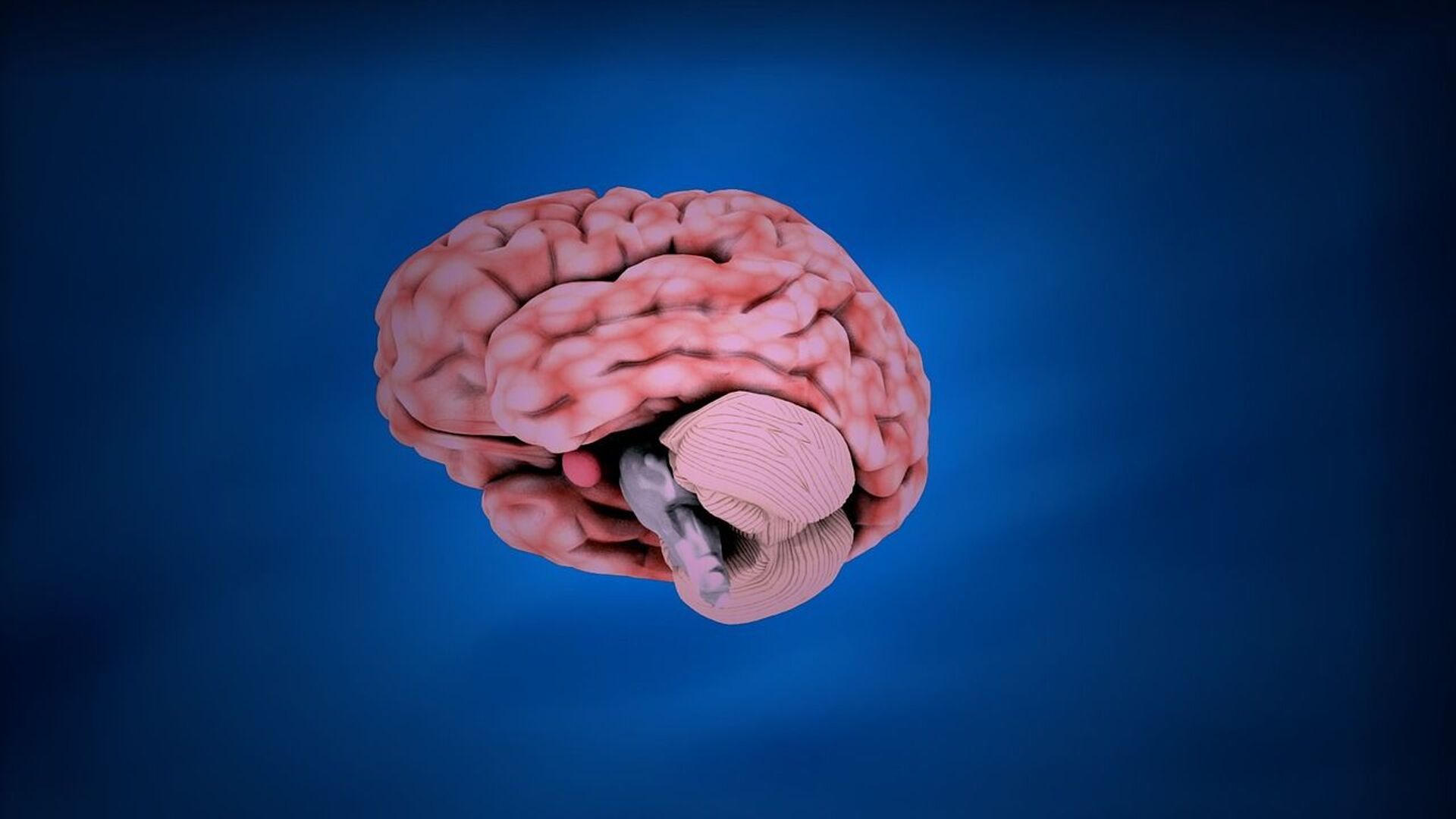https://sputnikglobe.com/20221009/new-research-unveils-a-function-of-brains-cerebellum-we-never-knew-about-1101652377.html
Research Unveils a Hitherto Unknown Function of Brain's Cerebellum
Research Unveils a Hitherto Unknown Function of Brain's Cerebellum
Sputnik International
The cerebellum, which is a Latin word for “little brain”, is the part of the brain that controls our movement. It is located at the back of the skull, just... 09.10.2022, Sputnik International
2022-10-09T11:53+0000
2022-10-09T11:53+0000
2022-10-09T12:57+0000
science & tech
brain
memory
university of basel
https://cdn1.img.sputnikglobe.com/img/07e4/08/03/1080049132_0:0:1280:720_1920x0_80_0_0_6d7d352675a876f46714a0c6e1ddf0e5.jpg
The human cerebellum, an area at the back of the brain, plays a key role when it comes to remembering positive and negative emotional experiences, researchers at the University of Basel have discovered.Latin for “little brain”, the major structure of the hindbrain tucked underneath the cerebral hemispheres is know to coordinate sensory input with muscular responses, or, in other words, plays an important role in motor control.However, the peer-reviewed research, published in the Proceedings of the National Academy of Sciences (PNAS), fed into the theories that the cerebellum may play a role in some cognitive functions and emotional control, such as regulating fear and pleasure responses.Typically, the amygdala and hippocampus are the brain regions considered to be most responsible for consolidating these emotional memories.‘Logging Emotional Memories’The team, led by Professor Dominique de Quervain and Professor Andreas Papassotiropoulos at the University of Basel, carried out brain scans of 1,418 individuals through functional magnetic resonance imaging (fMRI). As they viewed emotional - some positive, some negative - and neutral images, the scans revealed that the cerebellum was, indeed, involved in these types of emotional experiences.Furthermore, the participants in the study remembered positive and negative images much better than the neutral ones. According to the research, the enhanced storage capability was distinctly linked to times when the cerebellum was more active.The study also revealed that the cerebellum was receiving information from the frontal part of the cingulate cortex - a region key to perceiving and evaluating feelings - while relaying information to the amygdala and the hippocampus.According to the scientists, the findings of the research could expand knowledge regarding the role of the cerebellum in complex cognitive and emotional processes. The conclusions could be “relevant for the understanding of psychiatric disorders with aberrant emotional circuitry, such as post-traumatic stress disorder or autism spectrum disorder," concluded the team.
https://sputnikglobe.com/20220910/the-future-is-now-online-gamers-brains-synchronize-when-playing-together-research-shows-1100636073.html
Sputnik International
feedback@sputniknews.com
+74956456601
MIA „Rosiya Segodnya“
2022
News
en_EN
Sputnik International
feedback@sputniknews.com
+74956456601
MIA „Rosiya Segodnya“
Sputnik International
feedback@sputniknews.com
+74956456601
MIA „Rosiya Segodnya“
science & tech, brain, memory, university of basel
science & tech, brain, memory, university of basel
Research Unveils a Hitherto Unknown Function of Brain's Cerebellum
11:53 GMT 09.10.2022 (Updated: 12:57 GMT 09.10.2022) The cerebellum, which is a Latin word for “little brain”, is the part of the brain that controls our movement. It is located at the back of the skull, just above and behind where the spinal cord connects to the brain itself.
The human cerebellum, an area at the back of the brain, plays a key role when it comes to remembering positive and negative emotional experiences, researchers at the University of Basel have discovered.
Latin for “little brain”, the major structure of the hindbrain tucked underneath the cerebral hemispheres is know to coordinate sensory input with muscular responses, or, in other words, plays an important role in motor control.
However, the
peer-reviewed research, published in the Proceedings of the National Academy of Sciences (PNAS), fed into the theories that the cerebellum may play a role in some cognitive functions and emotional control, such as regulating fear and pleasure responses.
Typically, the amygdala and hippocampus are the brain regions considered to be most responsible for consolidating these emotional memories.
‘Logging Emotional Memories’
The team, led by Professor Dominique de Quervain and Professor Andreas Papassotiropoulos at the University of Basel, carried out brain scans of 1,418 individuals through functional magnetic resonance imaging (fMRI). As they viewed emotional - some positive, some negative - and neutral images, the scans revealed that the cerebellum was, indeed, involved in these types of emotional experiences.
Furthermore, the participants in the study remembered positive and negative images much better than the neutral ones. According to the research, the enhanced storage capability was distinctly linked to times when the cerebellum was more active.
"The aim of the present study was to investigate whether the cerebellum and cerebellar-cerebral connections are involved in the phenomenon of superior episodic memory for emotionally arousing visual information," the researchers reported.

10 September 2022, 13:34 GMT
The study also revealed that the cerebellum was receiving information from the frontal part of the cingulate cortex - a region key to perceiving and evaluating feelings - while relaying information to the amygdala and the hippocampus.
"These results indicate that the cerebellum is an integral component of a network that is responsible for the improved storage of emotional information," says neuroscientist Dominique de Quervain from Switzerland's University of Basel.
According to the scientists, the findings of the research could expand knowledge regarding the role of the cerebellum in complex cognitive and emotional processes. The conclusions could be “relevant for the understanding of psychiatric disorders with aberrant emotional circuitry, such as post-traumatic stress disorder or autism spectrum disorder," concluded the team.




